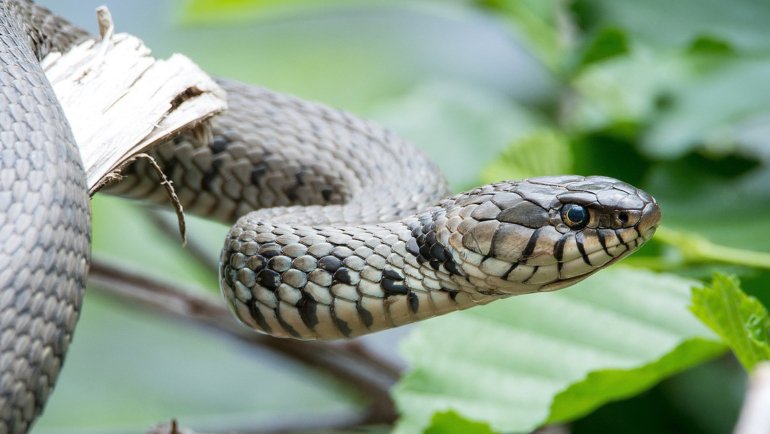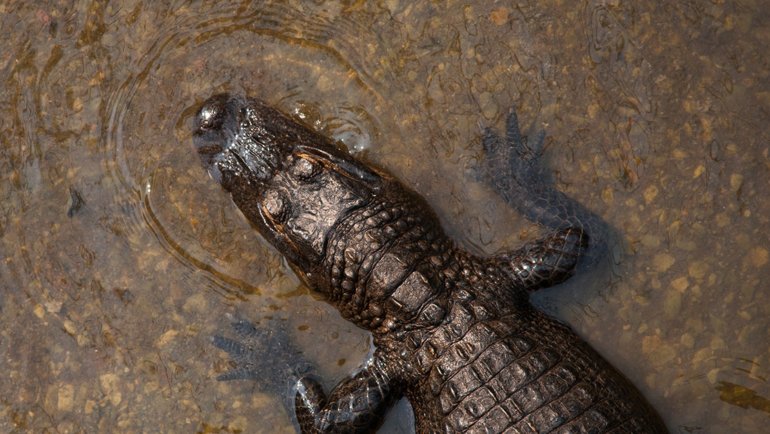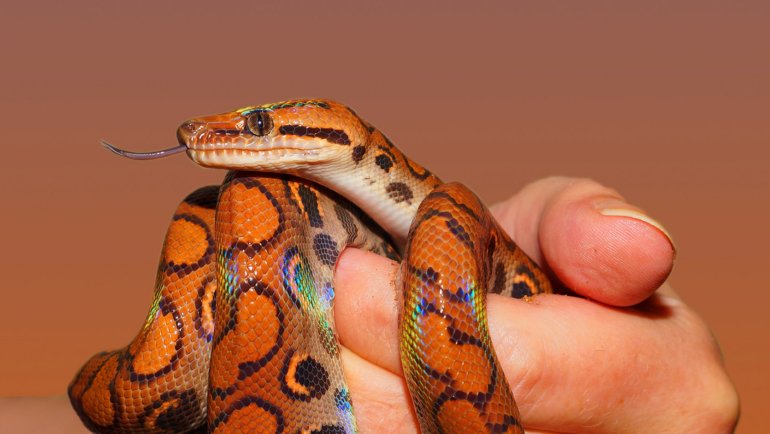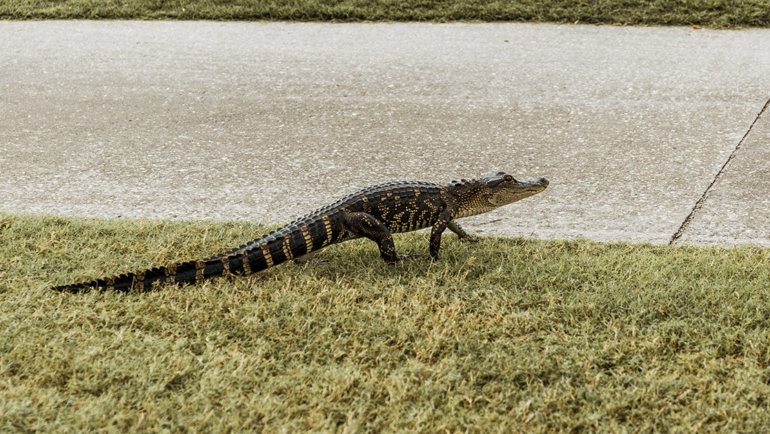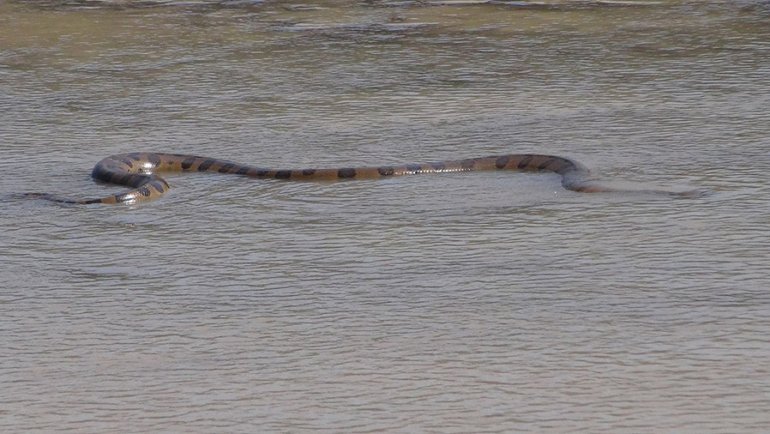The dwarf crocodile, Osteolaemus tetraspis, is a fascinating and unique species of crocodile, known for its relatively small size and distinctive features.
This article provides an in-depth look at the dwarf crocodile, exploring its classification, physical characteristics, behavior, habitat, and conservation status.
As the smallest of all crocodile species, the dwarf crocodile offers a compelling study in adaptability and survival in diverse environments. This fact sheet aims to enlighten and engage readers about this lesser-known but intriguing reptile.
The Dwarf Crocodile at a Glance
Classification
| Kingdom: | Animalia |
| Phylum: | Chordata |
| Class: | Reptilia (Reptiles) |
| Order: | Crocodylia |
| Family: | Crocodylidae |
| Genus: | Osteolaemus |
| Species: | O. tetraspis |
Essential Information
| Average Size: | Length: 4.9–5.9 feet (1.5–1.8 meters) |
| Average Weight: | 40–71 pounds (18–32 kilograms) |
| Average Lifespan: | 40–75 years |
| Geographical Range: | Central and West Africa |
| Conservation Status: | Vulnerable (IUCN Red List) |
Species and Subspecies
The dwarf crocodile Osteolaemus tetraspis is currently recognized to have two subspecies, which are differentiated mainly by their geographical distribution and slight variations in physical characteristics:
- Osteolaemus tetraspis tetraspis: This subspecies is found primarily in West Africa. It typically has a broader and more robust skull compared to its counterpart.
- Osteolaemus tetraspis osborni: Located in Central Africa, this subspecies is known for a narrower skull and is generally found in regions with slower-moving waters.
Both subspecies exhibit the characteristic features of the dwarf crocodile, such as a heavily armored body and short snout, but these subtle differences reflect their adaptation to different ecological niches within the African continent.
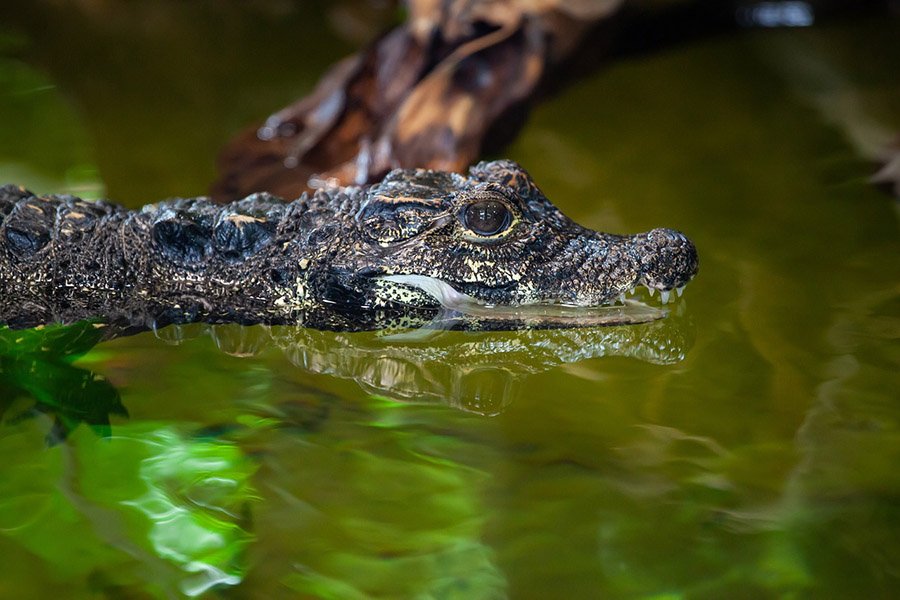
Description
Dwarf crocodiles, the smallest of all crocodile species, exhibit several distinctive physical features. Adult dwarf crocodiles typically reach lengths of about 4.9 to 5.9 feet (1.5 to 1.8 meters) and weigh between 40 and 71 pounds (18 to 32 kilograms). They have a robust, armored body with bony plates on their back and a relatively short, blunt snout compared to other crocodile species.
Their skin color varies from dark brown to black, often with a yellowish or creamy belly. The rough, rugged skin is adapted to their habitat and lifestyle, offering protection against predators and environmental elements.
There is some degree of sexual dimorphism, with males generally being larger and having more prominent bony ridges on their back than females. However, this difference is less pronounced compared to other crocodilian species.
Habitat and Distribution
Dwarf crocodiles are native to the tropical rainforests of Central and West Africa. Their habitat range includes countries like Nigeria, Cameroon, Gabon, and Angola.
These crocodiles prefer slow-moving freshwater environments such as swamps, marshes, and the backwaters of rivers and streams. They are particularly adept at surviving in dense forest environments, often in areas with substantial canopy cover which provides a humid and shaded habitat.
Their preference for smaller, often isolated water bodies reflects their adaptation to a more terrestrial lifestyle compared to other crocodiles, allowing them to thrive in a variety of aquatic environments within the rainforest.
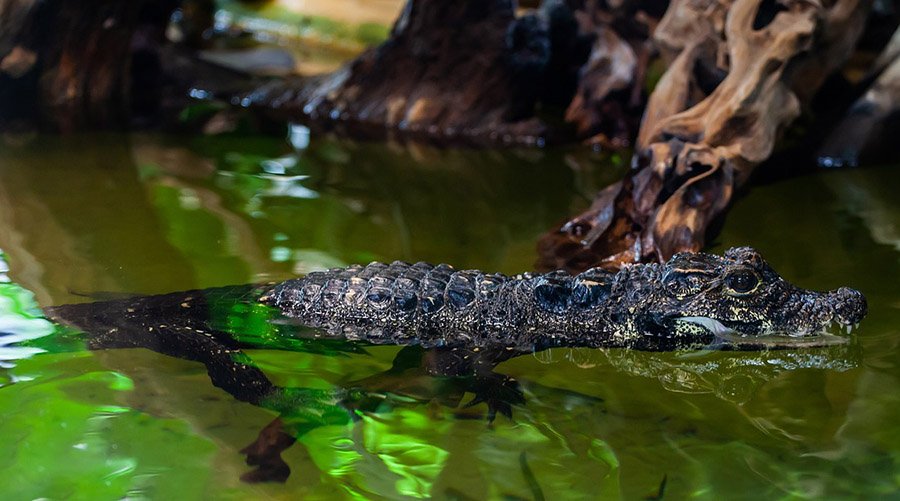
Behavior
Dwarf crocodiles exhibit a range of behaviors that are quite distinct in the crocodilian world. They are primarily nocturnal, spending the day resting in burrows or under dense vegetation and becoming active at night to hunt and feed.
Dwarf crocodiles are generally solitary animals, coming together mainly during the breeding season. Outside of this period, they maintain individual territories.
Like other crocodilians, dwarf crocodiles communicate through a variety of sounds, particularly during mating season. This includes growls, hisses, and other vocalizations to signal territory or readiness to mate.
While not as aggressively territorial as some larger crocodile species, dwarf crocodiles do establish and defend territories, especially during the breeding season.
These behavioral traits, combined with their physical adaptations, make dwarf crocodiles well-suited to the unique challenges of their rainforest habitats. Their nocturnal habits and solitary nature contribute to their somewhat elusive and mysterious status in the wild.
Diet and Feeding Behavior
Dwarf crocodiles are carnivorous, with a diet that primarily consists of small vertebrates and invertebrates. They have adapted to hunt in the confined spaces of their rainforest habitats. Their diet includes fish, amphibians, crustaceans, insects, and occasionally small mammals and birds.
These crocodiles are ambush predators, lying in wait for unsuspecting prey near the water’s edge. They rely on their camouflaged appearance and patience to catch their prey.
Predators
As adults, dwarf crocodiles have few natural predators due to their armored bodies and formidable jaws. However, young crocodiles are vulnerable to a variety of predators, including larger reptiles, birds of prey, and occasionally mammals.
Eggs and young hatchlings are the most vulnerable and can fall prey to monitor lizards, snakes, and even other crocodiles.
The dwarf crocodile’s nocturnal lifestyle and secretive nature help in reducing these threats, as does their preference for inhabiting remote and often inaccessible habitats.
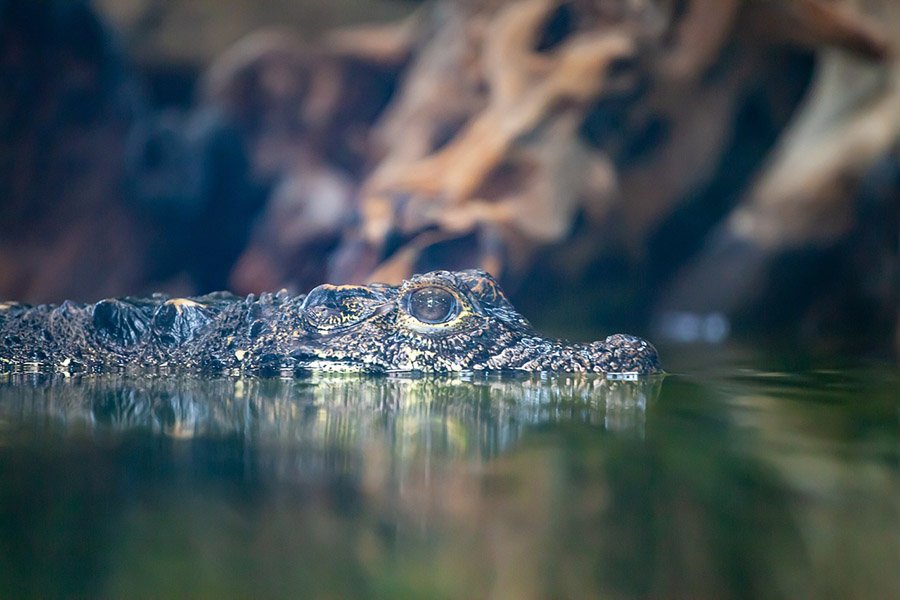
Reproduction and Life Cycle
Dwarf crocodiles have a fascinating reproductive cycle that is closely linked to the rainy season in their native habitats.
The breeding season typically coincides with the onset of the rainy season. Males attract females through vocalizations and physical displays.
Females build nests by mounding vegetation, which decomposes to generate heat to incubate the eggs. These nests are typically built on riverbanks or in marshy areas.
A female dwarf crocodile lays between 10 to 20 eggs. The incubation period lasts about 85 to 105 days.
After hatching, the young are cared for by the mother for several weeks. The young are precocial and are able to fend for themselves relatively quickly, but they stay close to the mother for protection against predators.
This reproductive strategy, where the female invests considerable effort in nest building and care for the young, is crucial for the survival of the species, given the vulnerability of eggs and hatchlings to predators.
Conservation and Threats
The conservation status of the dwarf crocodile, Osteolaemus tetraspis, is currently classified as “Vulnerable” by the International Union for Conservation of Nature (IUCN).
The primary threats include habitat destruction due to logging and land conversion, hunting for their meat and skin, and the illegal wildlife trade. Pollution and changes in water quality also pose significant risks.
Efforts to conserve dwarf crocodile populations include habitat protection, enforcement of hunting and trade regulations, and community education programs. Conservation breeding programs in zoos and wildlife sanctuaries also contribute to the species’ survival.
Fun Facts
- A Rainforest Dweller: Unlike most crocodilians, the dwarf crocodile is adapted to living in dense rainforests, making it unique among its relatives.
- Longevity: Dwarf crocodiles can live up to 75 years, a testament to their resilience and adaptability in the wild.
- Compact Powerhouse: Despite being the smallest of all crocodile species, dwarf crocodiles are formidable predators in their habitats.
- Secretive Nature: Their elusive behavior and nocturnal habits make dwarf crocodiles one of the less-studied crocodilian species.
- Architects of the Swamp: The nesting habits of dwarf crocodiles, involving the construction of large mounds of vegetation, showcase an intricate interaction with their environment.
Frequently Asked Questions
How big do dwarf crocodiles get?
Dwarf crocodiles typically reach lengths of about 4.9 to 5.9 feet (1.5 to 1.8 meters).
Where can dwarf crocodiles be found?
They are native to the tropical rainforests of Central and West Africa.
What do dwarf crocodiles eat?
Their diet includes fish, amphibians, crustaceans, insects, and sometimes small mammals and birds.
Are dwarf crocodiles dangerous to humans?
While they have a powerful bite, their small size and shy nature generally make them less of a threat to humans.
How can we help in conserving dwarf crocodiles?
Supporting habitat conservation efforts, responsible wildlife trade policies, and education about the species are key to their conservation.
Do dwarf crocodiles have any natural predators?
Adult dwarf crocodiles have few natural predators, but young ones are vulnerable to birds of prey, larger reptiles, and occasionally mammals.

